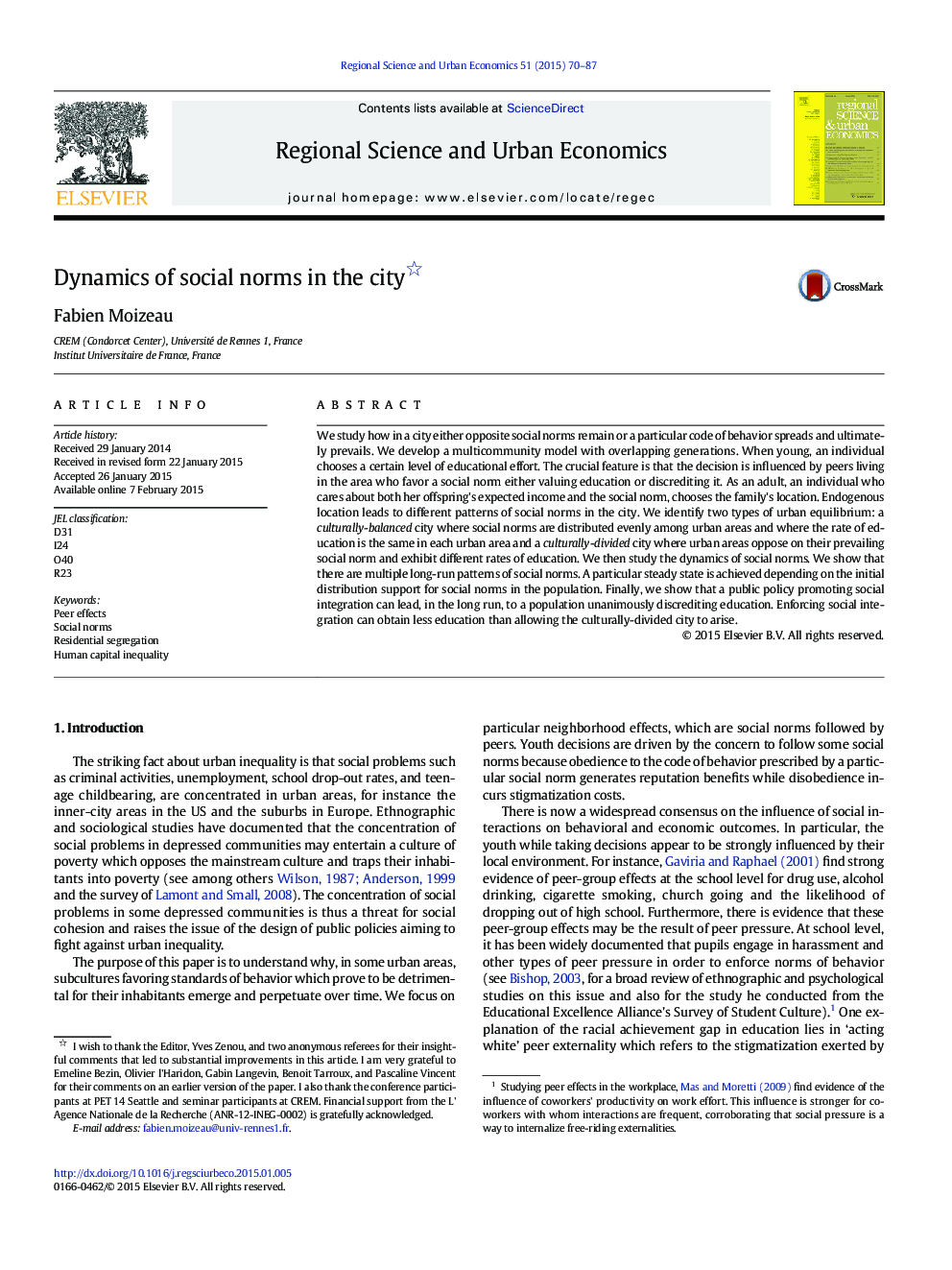| کد مقاله | کد نشریه | سال انتشار | مقاله انگلیسی | نسخه تمام متن |
|---|---|---|---|---|
| 983750 | 1480543 | 2015 | 18 صفحه PDF | دانلود رایگان |
• We study how in a city either opposite social norms remain or one code of behavior spreads and ultimately prevails.
• We develop an urban multicommunity model of norm diffusion.
• We identify multiple urban equilibria arising at each date and characterized by the mix of social norms in each urban area.
• Urban areas differing according to the prevailing norm explain the observed spatial variation of social opportunities.
• The dynamics of social norms exhibit multiple history dependent steady states.
We study how in a city either opposite social norms remain or a particular code of behavior spreads and ultimately prevails. We develop a multicommunity model with overlapping generations. When young, an individual chooses a certain level of educational effort. The crucial feature is that the decision is influenced by peers living in the area who favor a social norm either valuing education or discrediting it. As an adult, an individual who cares about both her offspring's expected income and the social norm, chooses the family's location. Endogenous location leads to different patterns of social norms in the city. We identify two types of urban equilibrium: a culturally-balanced city where social norms are distributed evenly among urban areas and where the rate of education is the same in each urban area and a culturally-divided city where urban areas oppose on their prevailing social norm and exhibit different rates of education. We then study the dynamics of social norms. We show that there are multiple long-run patterns of social norms. A particular steady state is achieved depending on the initial distribution support for social norms in the population. Finally, we show that a public policy promoting social integration can lead, in the long run, to a population unanimously discrediting education. Enforcing social integration can obtain less education than allowing the culturally-divided city to arise.
Journal: Regional Science and Urban Economics - Volume 51, March 2015, Pages 70–87
